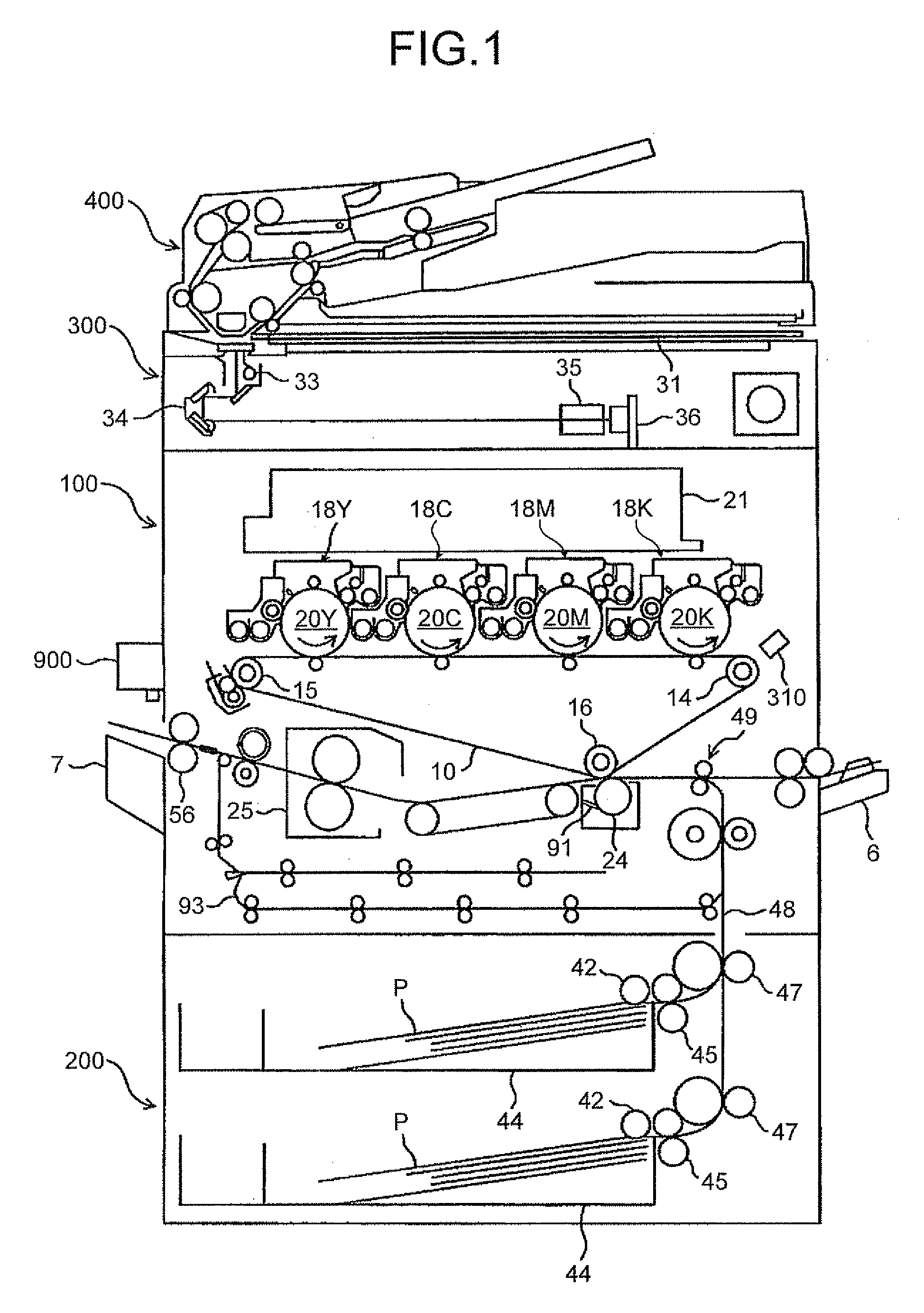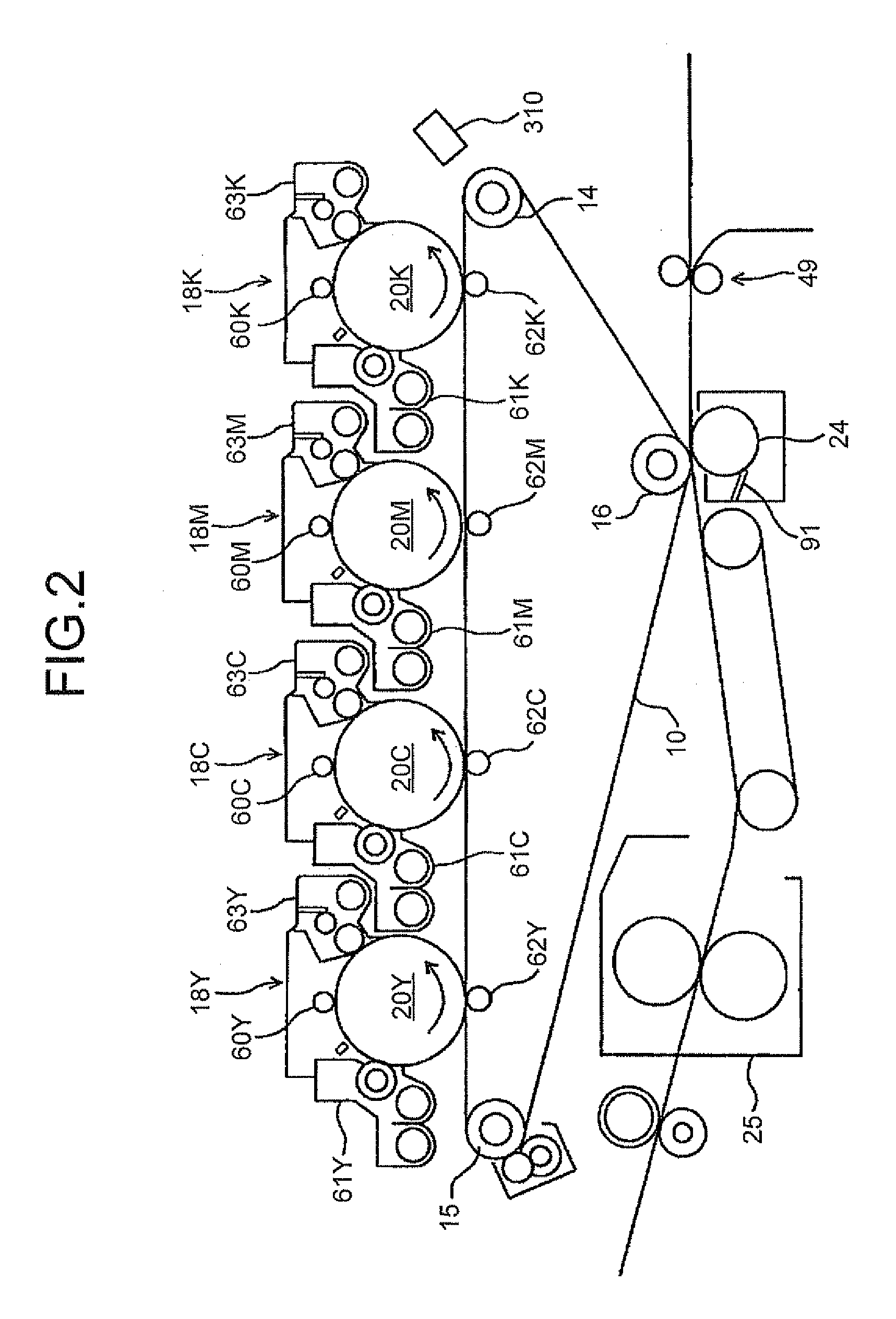Image forming apparatus
a technology of forming apparatus and forming plate, which is applied in the direction of digitally marking record carriers, instruments, electrographic processes, etc., can solve the problems of insufficient amount of the density of the developing plate, and the insufficient charge on the toner supplied, so as to increase the combined-color reproduction accuracy
- Summary
- Abstract
- Description
- Claims
- Application Information
AI Technical Summary
Benefits of technology
Problems solved by technology
Method used
Image
Examples
experiment 1
Comparative Example
[0117]An experiment is carried out with a test copier having the same configuration as the copier according to the embodiment. Successive printings of a predetermined test image having a combined color on 500 sheets of the recording paper P are performed. In these successive printings, the color-reproduction-accuracy increasing process is not performed but only the deposition-amount stabilizing process is performed. The deposition-amount stabilizing process is performed on a per-printout-sheet basis. The Y-, C-, M-, and K-toner patch images Py, Pc, Pm, and Pk are formed on an area on the intermediate transfer belt 10 corresponding to an inter-sheet area, in which recording paper is not to be overlaid on the intermediate transfer belt 10. Color measurement on the test image on each of the printout sheets is performed with the line spectrometer 900, and a result of the color measurement is converted into L*a*b* colorimetric system.
[0118]FIG. 9 is a graph illustratin...
experiment 2
Embodiment
[0128]After performing successive printings of a predetermined first test image having a combined color on 400 sheets of the recording paper P, successive printings of a predetermined second test image having a combined color on 300 sheets of the recording paper P are performed. In each printing, if a suitable color measurement area is found in the image, the color-reproduction-accuracy increasing process is performed, while if a suitable color measurement area is not found in the image, the deposition-amount stabilizing process is performed rather than the color-reproduction-accuracy increasing process. As the first test image, an image including a suitable color measurement area is employed, whereas as the second test image, an image not including a suitable color measurement area is employed. Accordingly, the color-reproduction-accuracy increasing process is performed for each of the first to 400th sheets of printed output, whereas the deposition-amount stabilizing proc...
PUM
 Login to View More
Login to View More Abstract
Description
Claims
Application Information
 Login to View More
Login to View More - R&D
- Intellectual Property
- Life Sciences
- Materials
- Tech Scout
- Unparalleled Data Quality
- Higher Quality Content
- 60% Fewer Hallucinations
Browse by: Latest US Patents, China's latest patents, Technical Efficacy Thesaurus, Application Domain, Technology Topic, Popular Technical Reports.
© 2025 PatSnap. All rights reserved.Legal|Privacy policy|Modern Slavery Act Transparency Statement|Sitemap|About US| Contact US: help@patsnap.com



